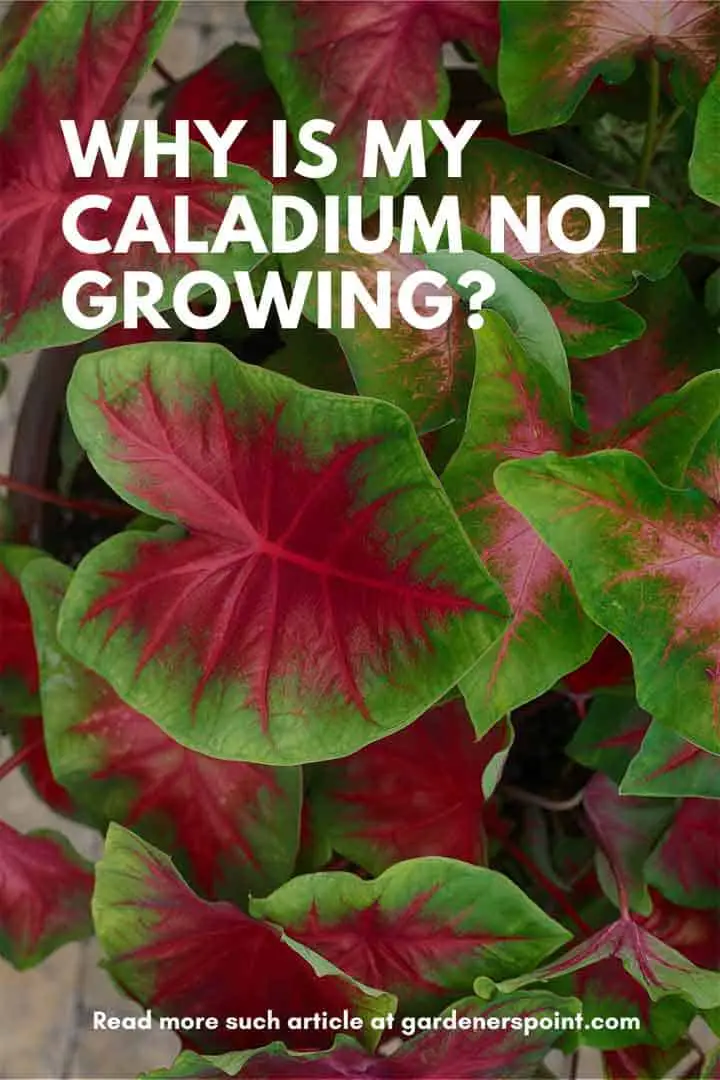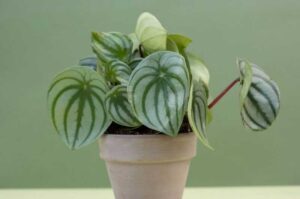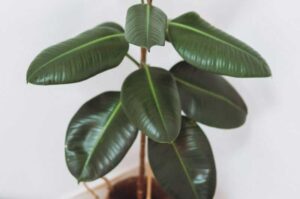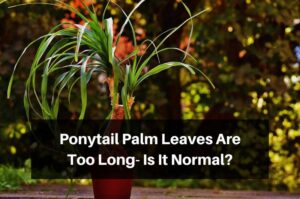Why Is My Caladium Not Growing? (7 Different Causes and Solutions)
Caladiums are beautiful foliage plants that can raise a few admiring eyebrows. Caladium plants grow beautiful leaves that are a mix of colors and can even give the enchanting effect of being flowers. But they come with their fair share of problems. One of them is stunted growth or, slow growth of Caladium. In this article, we are going to discuss the problem, why your Caladium is not growing.
The main issues for which your Caladium is not growing are improper watering habits. Both overwatering and underwatering can stop the growth of your Caladium plant. Apart from this overexposure to sunlight, lower humidity levels, temperature stress, improper use of fertilizers erc. contribute to stunted growth of Caladium plant.

Caladium Plants even though being comparatively easy to grow are very sensitive. Stunted growth is mainly observed in these plants when their tubers are hurt during storage.
Temperature also plays a major role as these are tropical perennial plants. They require a high temperature around 60-70 degrees Fahrenheit.
So, to grow these beauties you’ll need to have precise knowledge of how to address these issues. Let’s get started.

Improper Watering Habits
Your Caladiums might not be growing as they should because of your watering habits. These plants can suffer from both overwatering and underwatering. If you water these plants at a set time every day you are making life harder for them.
What Caladiums need is moist soil, that is neither saturated with water nor dry. So maintaining a proper balance of water is a must if you want these plants to grow.
Overwatering
This is an issue that bothers almost all houseplants. Even though it seems like it is better to always keep the plants in wet soil, you can not go more wrong with it.
Overwatering makes the soil saturated with water. This clogs the air spaces in the soil and suffocates the roots by depriving them of air. This leads to root rot in plants. Which further retards the growth of the plant.
Steps to prevent overwatering.
- Make sure there’s a lot of drainage holes in the pot that you’re using.
- Don’t water the plants unless necessary.
- Check the top two-inch layer of soil. If it is dried, then only, go for watering. Otherwise, skip it for the next day.
- Use well-drained soil for planting.
- You can add some perlite to your potting soil, to make it more aerated.
Underwatering
While overwatering can cause root rot, underwatering will leave your plants parched. Underwatering is the condition when your plant doesn’t have even the necessary amount of water, so that the plant can survive.
The various reasons for underwatering can be as follows.
- You are keeping your plant directly under the sun. This causes the water to evaporate and makes the soil dry.
- Not watering the plant when it needed to be watered.
- Less humidity around the plant. If the humidity is lesser than what the plants require they will release water by transpiration to keep the moisture content in the air high. This in turn will make the plant dehydrated and prevent its growth.
Steps to prevent underwatering
- You can check if the soil is dry by trying to push your finger in. If the soil feels cool and you can easily push your finger in an inch or so, the soil doesn’t need watering. But if that is not the case you should water them.
- Keep the plant away from direct sunlight to prevent excess evaporation of water.
- If the soil is dry, water thoroughly and lets the excess water flow out through the drainage holes.
- Keep your plant in a humid place. It will help your plant to stay hydrated.
Overexposure to Sunlight.
Caladiums are shade-loving plants. Even if you decide to grow them outside make sure you give them the shadier corner of your garden or else they will not grow properly.
The cause of this is when exposed to direct sunlight the leaves of these plants suffer sunburns, destroying the foliage. If this happens you’ll see blotches on the leaves. Sunlight will also cause the soil to dry up and make the plants dehydrated. This will further prevent the growth of these plants.
Things that you can do to prevent over-exposure to sunlight.
- Grow them indoors and keep them a few feet away from the windows.
- Keep a sheet or fabric between them and the source of direct sunlight.
- Make sure they are receiving only 4 hours of filtered sunlight.
If you can do these correctly, your plant will start growing again in no time.
You may also like this post- Is my plant getting too much light? Can too much light kill a plant?
Temperature Stress
Being tropical perennial plants, Caladiums are extremely intolerant to temperature fluctuations. Specially they suffer when the surrounding temperature is cold. They will die if the temperature falls extremely. This can also be the reason your plant has stopped growing.
Temperature mainly plays a role during the storage of the plant tubers. If the temperature is anywhere below 15 degrees Celcius when storing the tubers, the plants will show stunted growth.
The ideal temperature to store the plant tubers is between 15-32 degrees Celcius, i.e 60 to 90 degrees Fahrenheit. Once grown, the temperature around the plants should be maintained around 70-75 degrees Celcius to promote further growth.
Role of Potting soil
It goes without saying that potting soil is of utmost importance when it comes to growing houseplants. If you do not have proper potting soil, not only Caladium but also any other houseplant will suffer.
A Caladium plant not growing can be an indication that improper potting soil is being used. By improper potting soil, I mean soil that is not well-drained and doesn’t have enough organic matter in it to support plant growth.
The perfect soil for Caladium to grow in has the following qualities.
- Rich with organic matters.
- Well-drained. You can check if the soil you are using is well-drained or not by making a small hole and pouring water into it. If the water gets soaked, that means it is well-drained. If not then the soil is not well-drained.
- The pH level of the soil should be on the acidic side from 5.5 to 6.2.
You can use a damp mix of soil and peat to create a well-drained potting mix. Or you can order one online.
You may also like- How to make potting soil for indoor plants?
Improper use of Fertilizers
Proper use of fertilizers is another important aspect of growing Caladium plants. They can have stunted growth from both overuse of fertilizers and underuse of fertilizers.
Fertilizers should be used on these plants very carefully. Even if you use too much fertilizer only the amount that is required by the plant is going to be used. What happens to the leftover amount?
They will get accumulated on the soil as salts. This inhibits the ability of the plant to take up water. Subsequently, this results in stunted growth.
On the other hand, if you don’t use even the required amount of fertilizers, your plants will be malnourished and naturally won’t grow.
Solutions
If your plant is suffering from the issue of overuse of fertilizers you can solve it by long deep waterings. This removes the built-up salt and prevents any further buildup of salts.
Ideally, the plants should be fertilized weekly during the growing season. And that too should be done using liquid fertilizers or slow-releasing pellets.
Humidity Levels
Caladium plants require high humidity levels in the surrounding air for healthy growth. Thus, if that is not the case, their growth might be very slow or they might have stunted growth in extreme cases.
Low humidity also makes the plant transpire more and consequently dehydrates them.
An easy way to rectify this problem is to use a humidifier around the plants to keep the humidity levels high in the surrounding air. Another popular way to increase humidity around any kind of houseplants is to grow them in groups. The transpiration from the plants increases the moisture content in the air.
A more cumbersome yet innovative way is to use a pebble tray. These trays keep the humidity high around the plant throughout the whole day.
Learn how to make one here: https://pistilsnursery.com/blogs/journal/humidity-hack-how-to-make-a-pebble-tray-and-why-you-should
In Conclusion.
If your Caladium is not growing any one or a combination of the above-mentioned issues might be the cause. Consider first checking and making sure of which issues your plants are facing. Plan accordingly and take the necessary steps.
If done right, your plants will start growing again and you will have yourself enchanting foliage of beauty in no time.






